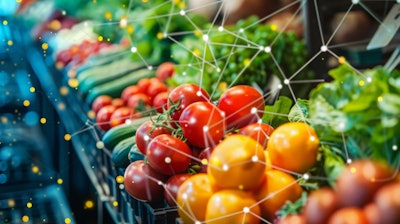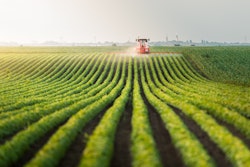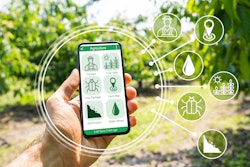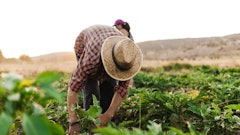
As the direct-to-consumer (D2C) farming industry continues to expand, 2025 is shaping up to be a year of transformation. Consumer expectations, environmental considerations, and new technological advancements are driving rapid changes, from addressing deceptive marketing practices to revolutionizing food delivery methods and packaging sustainability. For farmers, understanding the following trends are essential to staying ahead in an increasingly competitive market.
A new era of accountability
Greenwashing—the practice of making false or exaggerated claims about the environmental benefits of a product or service—has plagued industries for years, and the food industry is no exception. In D2C farming, where health-conscious and environmentally aware consumers are a core demographic, overstating sustainability credentials has been a growing issue for agribusinesses.
However, 2025 is set to reduce this problem. Governments worldwide are introducing stricter legislation to combat greenwashing, with fines and legal consequences acting as deterrents for bad actors. For example, penalties for misleading claims are escalating in regions like the EU and North America, where consumers are demanding transparency with the products they purchase. These measures not only protect consumers, but also level the playing field for ethical producers.
For D2C farmers, this shift underscores the importance of building authentic sustainability strategies to win customers’ trust and brand loyalty. Verifiable certifications, clear labeling, and third-party audits will become must-haves for farmers. Farms that fail to align their messaging with their practices risk more than fines—they risk alienating their customer base. As public scrutiny intensifies, trust and transparency will be non-negotiables.
The revolution in last-mile delivery
Efficient logistics are the backbone of a successful D2C farming business, where timely delivery is often critical for maintaining freshness and customer satisfaction. In 2025, local logistics – or last-mile logistics – will continue to evolve, offering new opportunities and challenges for food producers and shippers.
Small-scale couriers are rapidly encroaching on the territory of major players, leveraging mobile and location-based technologies to deliver exceptional service to consumers. These operators are able to provide tailored solutions that are often faster, cheaper, and more flexible than their enterprise counterparts. For D2C farmers, partnering with local couriers can reduce costs and improve delivery times, particularly in regional markets where larger transportation providers may lack necessary infrastructure to compete.
Another option farm businesses can consider is a rideshare company that can courier packages for owner-operators. This approach offers a low-cost alternative in urban areas, where speed and convenience are crucial. Rideshare-based models also allow for dynamic scaling, giving farmers the flexibility to meet demand spikes without long-term commitments.
Additionally, mobile apps and platforms are reshaping delivery management, moving beyond the capabilities of tools. Route optimization solutions can empower farmers and delivery teams to streamline operations, improve efficiency, and enhance customer communication.
Lastly, freight aggregators can further simplify logistics by handling live shipping rates, compliance, claims management, and post-purchase tracking. For D2C farming businesses, these tools can significantly reduce logistical complexity, while also creating a seamless customer experience that fosters loyalty.
As these trends unfold, farmers must adapt and embrace innovation and contemplate forging partnerships with emerging service providers to maintain a competitive edge.
Closing the loop on sustainability
Packaging has always been a critical component for farmers to ensure their products maintain quality and freshness during transport, but the environmental impact of certain types of packaging is coming under fire. Products like gel packs, dry ice, insulated liners, and boxes are essential for maintaining food quality during transit, but they can also generate significant waste. With sustainability becoming a top priority for consumers, farmers must find ways to balance functionality with environmental responsibility.
Suppliers are stepping up to the challenge, developing new materials and designs that reduce waste without compromising performance. Biodegradable liners, recyclable gel packs, and reusable packaging solutions are just a few examples of innovations gaining traction. These not only help farm businesses meet consumer expectations, but can also lower costs by reducing reliance on single-use materials.
Transparency is also critical when it comes to packaging. Farmers must clearly communicate their sustainability efforts, from the materials used in their packaging to the steps they are taking to minimize their environmental footprint. Providing customers with information on how to recycle or return packaging can enhance brand perception and build loyalty.
In order to achieve true packaging circularity, collaboration across the entire supply chain is required. Farmers, suppliers, logistics providers, and recycling facilities must work together to develop systems that support the reuse and recycling of materials. For example, some companies are experimenting with take-back programs for reusable packaging, creating closed-loop systems that reduce waste and save resources.
As home meal kits and D2C farm shipments continue to grow in popularity, sustainable packaging will become a key differentiator for brands. Farm businesses that invest in innovative, eco-friendly solutions will not only reduce their environmental footprint, but also position themselves as leaders in an increasingly crowded market.
Challenges and opportunities in 2025
The trends shaping D2C farming in 2025 reflect broader shifts in consumer behavior and market dynamics. For farm businesses, these trends present both opportunities and risks. On one hand, they open the door to innovation, efficiency, and stronger customer relationships. On the other, they demand a commitment to transparency, adaptability, and sustainability that may require significant investment and operational changes.
Ultimately, the D2C farms that will thrive in 2025 are those that embrace these challenges and opportunities head-on. By prioritizing authenticity, leveraging emerging technologies, and adopting sustainable practices, farmers can meet the evolving consumer and industry demands, while fostering trust and loyalty among their customers.


















